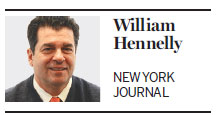
Air pollution is big news in China - and an opportunity for companies big and small that can help monitor the problem.
Microsoft Corp and IBM Corp already have come up with pollution-forecasting technologies at their research labs in China.
Now a San Francisco-based startup will look to establish itself in China with its portable "Atmotube" device.
|
The Atmotube, a portable air-pollution detector. Provided to China Daily |
Among the pollutants that the Atmotube detects are carbon monoxide, formaldehyde, benzene, acetone, propane, toluene, methlylene chloride and xylene.
Carbon monoxide and VOCs have been linked to an increased risk of heart disease, stroke, liver and brain damage, and cancer.
A user synchs the Atmotube via Bluetooth to his or her smartphone for a current reading on the air they are breathing, indoors or out. An LED light on the front of the device measures air quality: red=severely polluted; orange=very polluted; yellow=polluted; green= moderate; blue=good. The app also gives a numerical reading of air quality from 0-100, with 100 the best.

Vera Kozyr, a computer science graduate of St. Petersburg State Technical University in Russia, is the co-founder and CEO of notanotherone.com, an "Internet of Things" company that works on R&D, design and software with mobile carriers and tech startups. The Atmotube is the first proprietary product for the firm, co-founded by Igor Mikhnenko, who is the device's chief designer.
Let Kozyr describe how the Atmotube works: "It utilizes micro-hotplate technology, which provides a unique silicon platform for our metal oxide gas sensor and enables sensor miniaturization, significantly lower power consumption and fast heating times."
The company has raised $172,000 for Atmotube so far through indiegogo.com, a crowdfunding website. The device will generally retail for $89.90.
China, because of its air-pollution challenges, is one of Atmotube's target markets. In fact, it will even be assembled there - at a plant in Shenzhen, Guangdong province.
"We certainly plan to promote our device in countries with air pollution problems; China, India, Mexico are the first in our list," Kozyr wrote in an e-mail from Las Vegas, Nevada, where she and her team were attending CES 2016.
"We plan to make a Chinese version of our website in April and start the online sales," she said. "We do realize it's difficult to get to the China market without proper connections, so we hope to make a deal with local distributors during the CES or later on in January-February 2016.
"We travel to China a lot because of our work, and it is actually one of the reasons why we started this project," she said. "We always knew the air there was not great, but we never knew exactly how harmful it was, in which areas it was bad and when, whether it was a time to put on a mask or stay in our hotel instead of going to a factory.
"So a real-time air pollution monitor seemed like a perfect thing to have," she said. "And we don't even have any lung diseases; for people who have asthma or allergies, it gets even more critical to monitor the air they breathe."
Meanwhile, China has stepped up efforts recently against air pollution.
Beijing reached its annual target for reducing hazardous pollutants in 2015 and is drafting a long-term plan to improve air quality to clean by around 2030, the Beijing Environmental Protection Bureau said.
In 2015, the capital had 186 days with air quality that exceeded the national safety standard, 14 days more than in 2014, said the bureau's annual report on air pollution control.
"PM2.5 (particulate matter) pollution is still the prominent problem in Beijing and requires strengthened efforts," said Fang Li, the bureau's deputy director.
Coal burning and motor-vehicle exhaust emissions were major factors in the recent smog, the report said.
A State-level supervision team went to Hebei province on Monday for a monthlong
inspection of the province's environmental protection efforts, according to the Ministry of Environmental Protection.
Hebei, just south of Beijing, has serious air pollution problems. Seven of 11 cities in the province - Baoding, Xingtai, Tangshan, Hengshui, Handan, Shijiazhuang and Langfang - have ranked among the top 10 most-polluted cities in China in recent years.
"Blue sky and sunshine are now the most luxurious things for us," said Zhang Ning, a teacher in Shijiazhuang, the provincial capital.
The government of neighboring Shandong province is doubling rewards and fines for cities' air readings. It will pay cities that cut air pollution 400,000 yuan ($64,500) for each microgram of pollutant reduced per cubic meter, under a regulation that took effect on Jan 1.
Fines for those whose air quality deteriorates will be doubled, said Xue Mei, an official at the Shandong Bureau of Environmental Protection.
Contact the writer at williamhennelly@chinadailyusa.com